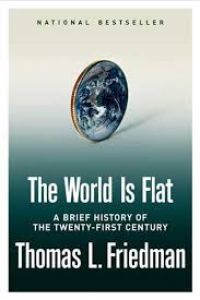Join getAbstract to access the summary!

Join getAbstract to access the summary!
Thomas L. Friedman
The World is Flat
A Brief History of the Twenty-First Century
FSG, 2005
What's inside?
All business used to be local; now it's global. What forces are flattening the global market and how do they affect you?
Recommendation
This overwhelming book succumbs to the very scope of its ambition and the topics it covers: globalization and technology. Author Thomas Friedman literally covers the world for The New York Times, and his access to important local authorities, corporate executives, local Times bureaus and researchers, the Internet and a tape recorder has enabled him to compile a huge amount of information. All of it buttresses his views about the important convergence of political and technological change. He offers interesting anecdotes about companies worldwide and intriguing conversations with friends, reporters and experts. But Friedman, well-spoken expert that he is, still needs an editor to tame his long chapters and repeated points. He conveys abundant knowledge, with incisive insights and interpretations, but skim where you must. With that caveat, getAbstract warmly recommends this wide-ranging treatment of technology’s role in global business and politics.
Summary
About the Author
Thomas L. Friedman has won the Pulitzer Prize three times for his reporting and foreign affairs column in The New York Times. He wrote three best sellers: The Lexus and the Olive Tree, Longitudes and Attitudes and From Beirut to Jerusalem, which won the National Book Award.

























Comment on this summary